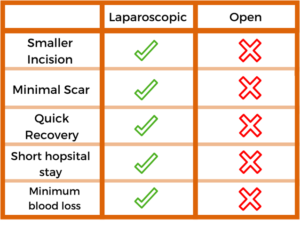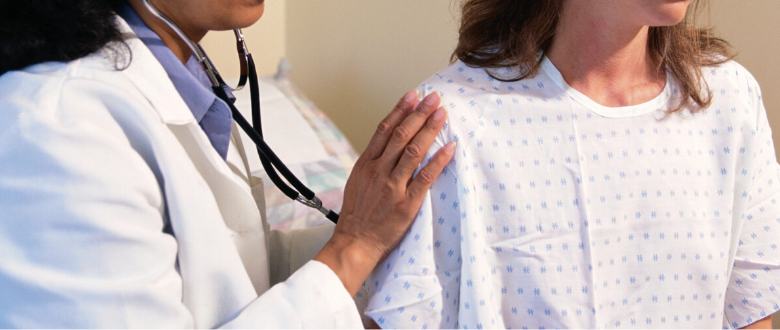Ritika Sharma, a 48 year old tax professional, was suggested an LAVH (laparoscopically assisted vaginal hysterectomy) after the diagnosis of fibroids in an enlarged uterus. She had been ignoring the pain since long but when it became unbearable, she decided to consult Dr. Anita Sabherwal Anand, Senior Obstetrician-Gynecologist at Sitaram Bhartia in South Delhi.
What is LAVH (Laparoscopically assisted vaginal hysterectomy) ?
“LAVH is a common surgical procedure in which the uterus and cervix is removed by doing the surgery partially by laparoscopy and partially through a vaginal route,” explains Dr. Anita.
LAVH is recommended in situations where a vaginal hysterectomy (NDVH) is difficult to perform. These include:
- Large uterus
- Endometriosis and previous abdominal surgeries
How is LAVH performed?
LAVH is performed mainly in two phases.
“To begin with, a laparoscope followed by laparoscopic instruments are inserted into the abdominal cavity through small cuts (laparoscopically) to identify and separate the womb and fallopian tubes.”
“In the second phase of the procedure, the now detached uterus is removed through the natural opening in the vagina, after which this opening is stitched up, ” says Dr. Anita.
The procedure does not always involve the removal of one or both ovaries. If both ovaries and the fallopian tube are removed, the procedure is termed LAVH with BSO (Bilateral Salpingo Oophorectomy). Removal of ovaries varies from case to case depending on multiple factors such as: family history or ovarian cancer. The ovaries are usually removed in instances of gynecological cancer or if there is an increased risk of it.
In Ritika’s case, it was decided not to remove them.
Ritika was curious to know about the LAVH surgery time and LAVH hospital stay to understand when exactly she could get back to work.
How long does an LAVH take?
“An LAVH is a common surgery and usually takes upto three hours. However, the hospital stay and recovery time may vary depending on one’s condition after the procedure,” says Dr. Anita.
Mostly women are discharged on postoperative day 3.
Ritika had done some online research before coming in for a consultation and so had a few questions, which she now posed to the gynecologist.
What is the difference between LAVH and TLH? (lavh vs tlh)
In total laparoscopic hysterectomy (TLH), the complete surgery including suturing of vagina is done laparoscopically. In an LAVH, however, a part pf surgery is done through the vaginal route.
Is the cervix removed in an LAVH?
“In LAVH, the removal of the cervix depends on your condition. In most cases, however, it is usually removed.”
Ritika wanted to understand the difference between an open and laparoscopic surgery.
“An open surgery usually involves making a big incision on the abdomen whereas in laparoscopic surgery, a smaller cut (0.5cm- 1cm) is made to use special laparoscopic instruments to do the surgery.”
“Your gynecologist will suggest the best approach depending on your condition.”
The benefits of laparoscopic surgery are:
- Small Incision
- Short hospital stay
- Quicker recovery
- Minimum blood loss
- Minimal scarring
On the other hand, the disadvantages are very few. LAVH is an expensive procedure and is sometimes considered to take more time.
 Laparoscopic vs. open surgery
Laparoscopic vs. open surgery
“In some cases, it is possible that an open surgery might be suggested as a result of a large fibroid or any other condition where a laparoscopic surgery may not be very safe or possible.”
Ritika had one final question about LAVH.
What should I expect after LAVH surgery?
It is possible for you to experience slight discomfort, pain, nausea, or vomiting right after the surgery. But you will be given medicines for that.
Apart from that, the hospital stay can vary from 1 to 3 days depending on your condition and the speed of your recovery. You may need a catheter for upto 24 hours.
Ritika felt relieved as all her doubts disappeared in just one consultation. After the discussion, she decided to follow Dr. Anita’s suggestions.
She underwent LAVH soon after and felt relieved as her long-standing pain and discomfort ended with a simple, routine surgery.
When she came in for a follow up visit after a week, she expressed her happiness, “I was very tense before the surgery but when Dr. Anita calmly cleared all my doubts in the consultation, I knew that I was in the right hands. Now a week after surgery, I feel much better and am nearly back to my normal routine.”
Come in for a consultation with Dr. Anita. Please call on +919871001458 to schedule an appointment.
This article was written in March 2020 with editorial inputs from Dr. Anita Sabharwal Anand, practicing obstetrician-gynecologist for 20+ years.

MBBS, Lady Hardinge Medical College, University of Delhi (1992); MD (Obstetrics & Gynaecology), Lady Hardinge Medical College, University of Delhi (1997); DNB Secondary (Obstetrics & Gynaecology), National Board of Medical Education, New Delhi (1999)
Liked this article? Follow us on Facebook, Twitter, Youtube and Instagram for more content!

